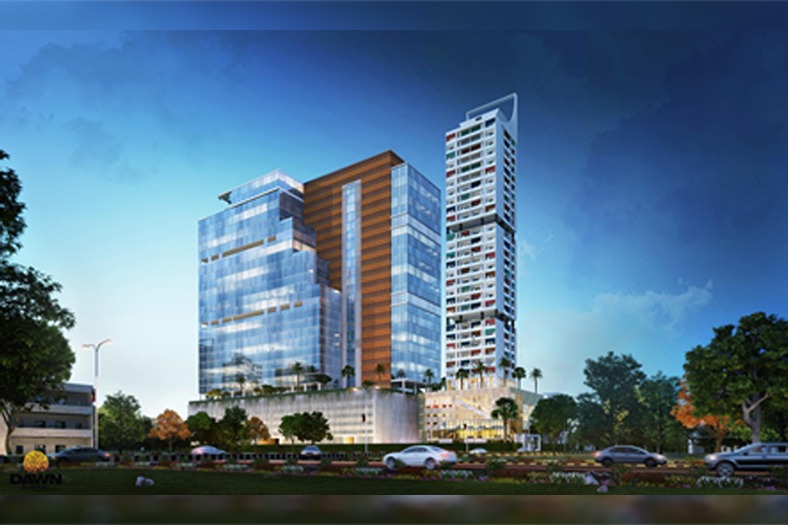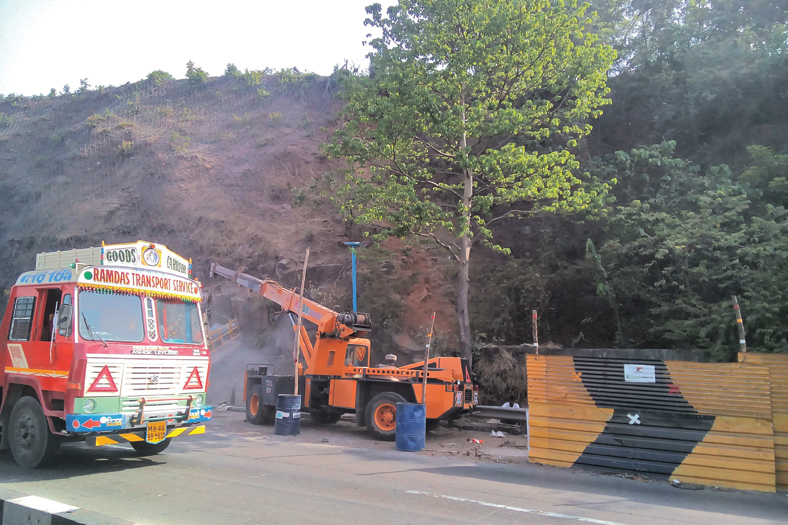Materialising road surface
The new government’s planned development is adding a new hope to the road construction materials sector
The Indian Government has planned to develop a total of 66,117 km of roads under a series of programmes, and the importance of road construction materials is like never before. The most popular road construction material is asphalt, followed by concrete. Roads, however, can also be made from brick, gravel and other materials.
Choosing right materialsWhile choosing the right materials, one needs to consider traffic patterns, weather, cost and noise issues. For a high-traffic road, asphalt is usually the preferred material. Known as asphalt concrete, it consists of a mixture of aggregate bound together with sticky asphalt. Roads builds with asphalt require preparation to set up the road bed and design a road with the correct degree of incline.Such roads needs to rise in the middle to promote drainage and must be banked correctly around curves. For some roadways, concrete is also used.
Then there are brick, cobblestones and other pavers, which are also used as road construction materials. These are used in areas where people want a specific aesthetic look and the traffic does not move quickly because fast traffic can damage the roadway surface. This kind of construction also generates a great deal of noise. These materials are also used for driveways and low traffic roads.
Gravel and other aggregate materials are used to earth roads to create a drivable surface. These materials are suitable for low traffic, low speed areas. If an earth road needs to handle more traffic, a tar and chip or bituminous surface treatment would be a better option. In these roads, aggregates are mixed with sticky binders. These roads, however, need periodic resurfacing to keep them functional.
RecyclingWhile rehabilitating a roadway, distressed road materials can be reused. The existing pavement is broken up into small pieces through milling. Then the broken pieces can be transported to an asphalt or concrete plant and recycled to form the base for new pavement.
There are three typical types of construction techniques related to recycling the surface of distressed or damaged pavement: rubblising, cold and hot in-place recycling, and full-depth reclamation.Rubblising involves reducing the road to gravel and then applying a new surface. Hot and cold in-place recycling relies on using bituminous pavement to reinforce the road, and full-depth reclamation involves both total pulverisation and the addition of binding agents or other additives.
Bridge construction materialsRoad construction materials for bridges and similar structures include steel reinforcing beams. These supplies create a stable structure that can withstand huge weights. Sometimes, structural steel and concrete are also used to create the supports. Some structures even require specialty features, like a lift bridge to allow ship traffic to pass underneath. A substantial design and engineering is required to create this kind lift bridge.
Alternative materialsIndia has the second largest road network in the world. To develop and maintain this network in an efficient, environment-friendly way, there is need for innovation in design, planning, construction, maintenance and operation of highways. These long-term perspectives would require development of new as well as alternative materials and technologies for high quality, cost-effective, environmentally friendly, safer and durable road infrastructure.
Government initiativeTo encourage use of new as well as alternative materials and technologies, the ministry initiated the process of accreditation with the assistance from Indian Roads Congress. However, new and alternative materials are continuing to receive lukewarm response by the project engineers, designers as also the consultants. Therefore, pro-active steps for their adoption need to be encouraged.
Worldwide, many new and alternative materials have emerged, which hold promise for adoption in India as well. The Ministry of Road Transport and Highways has, accordingly, been issuing guidelines for the usage of the new materials from time to time.
The Manuals of “Standards & Specifications for 4/6 laning of National Highways through Public Private Partnership” also stipulate that “the concessionaires will be free to adopt international practices, alternative specifications, materials and standards to bring in innovation in the design and construction provided they are better or comparable with the Indian standards”.
Accordingly, the ministry has decided that the new and alternative materials proven in India or abroad will be deemed to be accredited for adoption in the highway sector, subject to the following:
• The developers or promoters of new and alternative materials will have to provide the standards and specifications and certified performance reports from the user agencies of major developed countries where the proposed materials have been successfully used to the executing agency to establish their suitability for adoption.• The developers or promoters shall strive to establish permanent base in India and show long-term commitment to the goal of innovative infrastructure development in India.• The new and alternative materials should be given priority in field trials and the performance evaluated over a period of time to enable formulation of guidelines and codes of practice for their future usage on the national highways.
Use of technologyThe new government has set a target of increasing the speed of highway construction to 30 km a day, as work on 95 per cent of 190-odd projects has started. In order to achieve that, the government is focusing on new technology too. Mr Gadkari recently told that the roads ministry has been advocating the use of technologies such as the one where a by-product of oil is used for road laying.
In an aim to improve road designing and bring down construction cost, the government is looking at encouraging use of modern technology and adopt global best practices in road building.
The ministry is also looking at ways to adopt and promote the use of alternate materials for road construction, which will be cheap and sturdy. “To encourage use of new, alternative materials and technologies, the ministry initiated the process of accreditation. So far, new technologies and alternative materials could not receive desired response from project engineers, designers and consultants. Therefore, pro-active steps for their adoption need to be encouraged,” Road Secretary Vijay Chibber said.
The Secretary said, “World-wide, many new technologies and alternative materials have emerged, which hold promise for adoption in our country as well. The ministry has accordingly been issuing guidelines for the usage of the new materials and technologies from time to time.”
He added that the Manuals of ‘Standards and Specifications for 4/6 laning of National Highways through Public Private Partnership’ also stipulate that the concessionaires will be free to adopt international practices, alternative specifications, materials and standards to bring in innovation in the design and construction, provided they are better or comparable with the Indian standards.
26
Cookie Consent
We use cookies to personalize your experience. By continuing to visit this website you agree to our Terms & Conditions, Privacy Policy and Cookie Policy.









